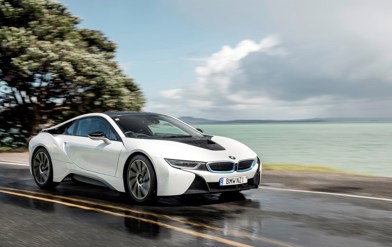GREAT WALL IS RIDING BACK IN ON ITS BOLDER, BIGGER, STRONGER STEED UTILITY
Utes account for a quarter of all new vehicles sold in New Zealand, and the sector is about to become even more competitive with the re-entry of Chinese brand Great Wall.
More than 5500 New Zealanders rushed to buy the bargain-priced utes when they were last available here.
But there have been no new Great Wall utes imported for two years and, in that time, the light commercial vehicle sector has been one of the fastest-growing sectors of the market.
Manufacturers have broadened the appeal of their utes, providing additional creature comforts and safety features so they can be used at the weekends as well as during the working week.
So popular have utes become that the Ford Ranger is not only the best-selling light commercial this year, but also the overall top selling model during the year to the end of August.
While the epic battle continues between the Ranger and Toyota Hilux ranges among the top-selling models, competition is just as intense throughout the sector.
This means Great Wall’s re-entry has to be at a competitive price point. Just where that price point is remains to be seen - a company spokesman said yesterday prices were still being finalised with New Zealand dealers.
The well-equipped Steed utes are powered by a 2.4-litre petrol engine or a 2-litre direct injection diesel unit. The two petrol models have six-speed manual gearboxes, while the two diesels have a five-speed gearbox.The turbo-diesel produces 110kW of power at 4000rpm, and 310Nm of torque, while the petrol engine delivers 100kW of power and 205Nm of torque.

All models have six airbags, electronic stability control, climate air conditioning and other creature and safety features such as cruise control and automatic tyre pressure monitoring systems.
They also have, as standard, automatic headlights and wipers, side steps, a stainless steel sports bar and daytime running lamps. Inside are heated seats and a six-way powered driver’s seat, Bluetooth phone and audio streaming, a leather-wrapped steering wheel, and stainless steel scuff plates.
Great Wall is establishing its own distribution unit in New Zealand after parting ways with the previous distributor, Atteco.
The company says it will have a full parts and service network in place by the end of the year, and the majority of previous dealerships which handled Great Wall will resume doing so from next month, which is important because about 2000 of the 5500 Great Wall utes on the roads are still under warranty.
The Chinese company is clearly determined to learn from its experience in the competitive Australian and New Zealand markets.
They are being used as a virtual test bed for Great Wall’s eventual expansion into other larger and equally competitive markets such as North America and Europe.
The company, only 26 years old, has produced the best-selling ute in the world’s largest automotive market for the past 18 years. In China the utes are popular with farmers. However, Great Wall is keen to understand and adapt to the requirements of more demanding Western markets such as Australasia.

The utes are well-built and well-equipped, but the lack of an automatic option in the four-model line-up is glaring.
Great Wall Australia hopes to have an automatic option available in time, but is reluctant to predict exactly when.
The Steed has a payload of 1010kg, a braked towing capacity of 2000kg, and comes standard with four heavy-duty tie-down points in the lined tub.
The company does not know when its latest version of the ute will be given a safety ranking by ANCAP, although the addition of features such as the Bosch electronic stability control must boost its confidence of gaining a reasonable rating.
The Great Wall Steed has a bolder, more contemporary appearance than its predecessor, slightly larger carrying capacity, and is generally more comfortable to travel in.
The ute’s stablemate, the Haval H6 medium-sized, is expected to be launched on the New Zealand market next year.
It is a more sophisticated and enjoyable vehicle to drive, with heavier European-type steering.
The appearance of the Haval H6 is pleasing and they are well-assembled, reflecting both European vehicle design flair and Japanese manufacturing expertise.









